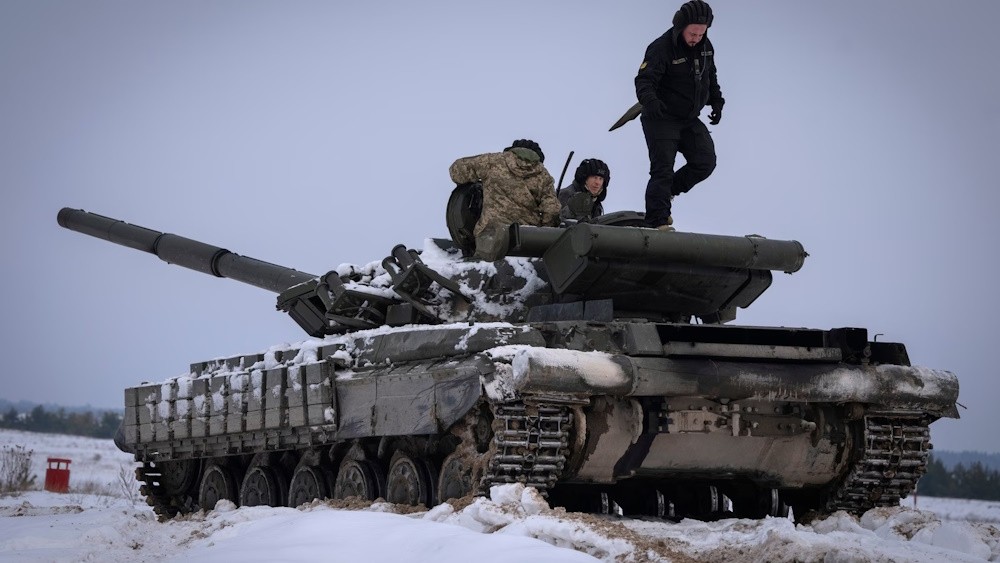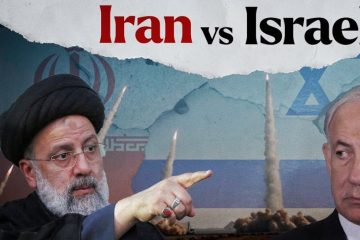Ukraine is altering the dynamics of the conflict

In recent months, numerous instances have been recorded of swarms comprising up to 150 Ukrainian drones traversing extensive distances into Russian territory, targeting missile storage sites, critical fuel reserves, military airfields, and defense manufacturing facilities. Once deemed extraordinary, these deep strikes now scarcely make headlines. Ukrainian officials, along with certain Western allies, are increasingly recognizing that the impact of long-range attacks may serve as a pivotal factor, potentially compelling President Vladimir Putin to engage in negotiations for a viable peace settlement.
“Our ability to bring the war back to its origins, to Russia, is what fundamentally changes the dynamics of the situation,” remarked Ukrainian President Volodymyr Zelensky following a recent attack last month. According to analysts utilizing open-source intelligence, the assault resulted in the destruction of approximately 58 warehouses and a railway terminal at an artillery and rocket arsenal located northwest of Moscow. Following discussions with U.S. Defense Secretary Lloyd Austin this week, Zelensky announced that Washington is preparing a $800 million package to support Ukrainian drone production.
To date, Ukraine’s long-range strikes have successfully extended to Russia’s Arctic coastline in the north and regions adjacent to Kazakhstan in the east, utilizing weapons manufactured domestically. Alongside the deployment of drones, Kyiv has also employed Ukrainian-manufactured Neptune cruise missiles against Russia, albeit in significantly lesser quantities. Zelensky recently announced that Kyiv has developed ballistic missiles; however, there is no indication that they have been deployed as of yet. The United States and its allies have permitted Ukraine to engage with Western armaments in areas bordering Russia, including Kursk. However, they have consistently rebuffed President Zelensky’s appeals to strike further afield into Russian territory, specifically targeting military airfields with the ATACMS or Storm Shadow missiles supplied to Kyiv.
Putin has consistently cautioned against escalation if these Western missiles are allowed to strike within Russian territory. Western officials express concern that the Kremlin may respond by supplying Yemen’s Houthis with advanced missiles capable of targeting U.S. warships in the Red Sea, or by intensifying sabotage efforts across Europe. Russia has supplied the Houthis with intelligence aimed at targeting commercial shipping. While not as formidable or rapid as ATACMS or Storm Shadow, Ukraine’s indigenous long-range munitions have progressively enhanced in both range and effectiveness, evolving from a mere irritant to a significant strategic asset in a conflict nearing its third anniversary. This development marks a significant departure from the initial year of the conflict, during which Russia relentlessly targeted military and civilian sites throughout Ukraine with drones and missiles, unencumbered by the prospect of a substantial domestic backlash.
“When Russia possessed the exclusive capability to strike deep into logistics and military infrastructure, while Ukraine was constrained to targeting only front-line positions, it created a significant asymmetry favoring Russia,” stated Mykola Bielieskov, a fellow at the National Institute for Strategic Studies, a government think tank in Kyiv. “We are now demonstrating our capabilities through notably effective strikes.” The evolving situation benefits us, as those initiating strikes maintain the upper hand, while Russia struggles to protect its extensive territory. Ukraine is advancing its long-range strike capabilities at a pivotal juncture in the conflict. Russian forces, benefiting from superior manpower and ammunition, continue their gradual yet persistent advance in Ukraine’s eastern Donbas region, while probing Ukrainian defenses in the southern Zaporizhzhia area.
There is an increasing consensus in Kyiv and among its supporters that the conflict in Ukraine cannot be resolved solely within its borders. Instead, achieving a resolution necessitates delivering significantly greater harm to Russia’s economic and military capabilities. “A protracted conflict in the South and the East is not one that Ukraine can sustain and ultimately prevail in over the long term.” “They must determine how to alter Vladimir Putin’s calculus,” remarked Rep. Jason Crow (D., Colo.), a U.S. Army veteran who, along with numerous Democratic and Republican lawmakers, is urging the Biden administration to permit the deployment of ATACMS within Russia. “Ukraine possesses the inherent right to self-defense, which necessitates targeting—within Russian territory—the safe havens, bases, and military logistics centers that facilitate attacks on civilians in Ukraine,” he stated.
Senator Roger Wicker (R., Miss.), the leading member of the Senate Armed Services Committee, expressed his concerns in a letter to President Biden this month, asserting that Washington has significantly constrained Ukraine’s military capabilities. He called on Biden to implement limitations on Ukraine’s use of ATACMS, emphasizing criteria related to target types instead of arbitrary istances from a border that Russia itself does not acknowledge, while also advocating for the transfer of a “significant number” of the U.S. military’s ATACMS stockpile to Kyiv. The earlier threats issued by Russia regarding retaliation for American arms supplies to Ukraine appear to have been mere bluster. However, Putin’s admonitions regarding the deployment of long-range Western missiles against Russia occupy a distinct realm, noted Sam Charap, who chairs the Russia and Eurasia policy at Rand, a think tank located in Santa Monica, California.
“It represents the singular, unequivocal boundary that the Russians have established.” Charap noted that should this occur, there will be significant pressure for them to respond, given the credibility issues that would arise from inaction. “One could envision them perceiving a U.S.-facilitated attack on targets deep within Russia as tantamount to a Russian assault on sites in Poland.” Austin, in a recent interview with Fox News, asserted that ATACMS strikes within Russia would not alter the trajectory of the conflict, as Russia has preemptively relocated its aircraft capable of launching glide bombs beyond the operational range of these missiles. He commended Ukraine’s “highly effective” drone capabilities.
Ukraine has successfully established a framework of mutual deterrence with Russia in the maritime arena, facilitated by its long-range strike capabilities. The assaults on the Russian Black Sea Fleet, coupled with naval drone strikes targeting the port of Novorossiysk, have resulted in informal agreements that facilitated the reopening of Odesa, Ukraine’s principal port, to international shipping last year. Efforts to dissuade Russian assaults on Ukraine’s energy infrastructure have intensified, following a series of methodical Ukrainian offensives targeting Russian refineries and several significant power stations earlier this year.
Sergei Shoigu, the Secretary of the Russian National Security Council and former defense minister until May, stated in September on Russian state television that President Putin had agreed to a Turkish initiative aimed at halting reciprocal assaults on energy infrastructure and commercial shipping in the Black Sea. However, he noted that President Zelensky had dismissed the proposal. According to Putin’s spokesman Dmitry Peskov, the indirect negotiations were disrupted by the Ukrainian incursion into Russia’s Kursk region in August. During a recent press conference in Kyiv, Zelensky expressed his support for a reciprocal cessation of attacks on energy infrastructure and civilian shipping, suggesting that such measures could facilitate the conclusion of the “hot phase” of the conflict.
In the interim, the strikes persist. Prior to the 2022 invasion, Ukraine was a significant player in the aviation manufacturing sector, home to notable firms like the Antonov aircraft company and the Motor Sich engine manufacturer. At present, over 20 distinct Ukrainian firms are engaged in the production of an array of drones, among which is the innovative Palianytsia, equipped with a reaction engine that approaches the capabilities of a guided missile. A significant portion of that production is financed through assistance from Western sources. A Ukrainian officer engaged in long-range operations indicated that Western allies frequently play a role in the selection of targets, adhering to stringent guidelines to minimize civilian harm, while also supplying intelligence and surveillance information to evaluate the outcomes of these operations. Ukrainian drones previously navigated around Russian urban centers to prevent unintended collisions with unmarked structures, as noted by the officer. This constraint was lifted only following the bombing of Kyiv’s Okhmatdyt children’s hospital in July.
In the wake of a series of assaults on airfields, munitions depots, and fuel stockpiles, Kyiv is now focusing its scrutiny on the Russian defense sector. In recent weeks, a number of defense facilities have come under attack. “Should Russia begin to experience disruptions in its production lines, and if its workforce starts to perceive a tangible threat to their safety while at work, this could significantly undermine the Russian Federation’s capacity to sustain its military operations,” stated Anatoli Khrapchynski, a senior executive at a Ukrainian defense manufacturer. Currently, despite Russia’s ongoing indiscriminate assaults on Ukrainian urban centers, Kyiv refrains from targeting Russian assets that lack a direct link to the military operations. Despite the grounding of all Ukrainian civilian flights since February 2022 due to Russian attacks, Ukraine has refrained from targeting Russian civil aviation. In its military strategy, Kyiv has opted to avoid striking Russia’s crude oil export facilities, which serve as a crucial financial support for the Kremlin, despite the fact that a considerable portion of these exports traverses the Black Sea and remains within striking distance.
This restraint stems, in part, from Washington’s apprehensions regarding a potential surge in oil prices, especially in the lead-up to the elections on November 5. However, if Ukraine experiences increased pressure on the battlefield in the forthcoming months, these constraints may be lifted. Serhiy Sternenko, a Ukrainian fundraiser supplying drones to the military, highlighted the inadequate enforcement of Western sanctions on Russian oil exports. He noted that oil transactions with countries like India are supplying Putin with essential financial resources for the ongoing conflict. Strikes by Ukraine on Russian crude export terminals may be viewed as a novel approach to economic sanctions, he remarked. “For Ukraine, this is a struggle for existence,” Sternenko remarked. “It is imperative to eliminate all resources that enable the adversary to sustain its military campaign against Ukraine.”










